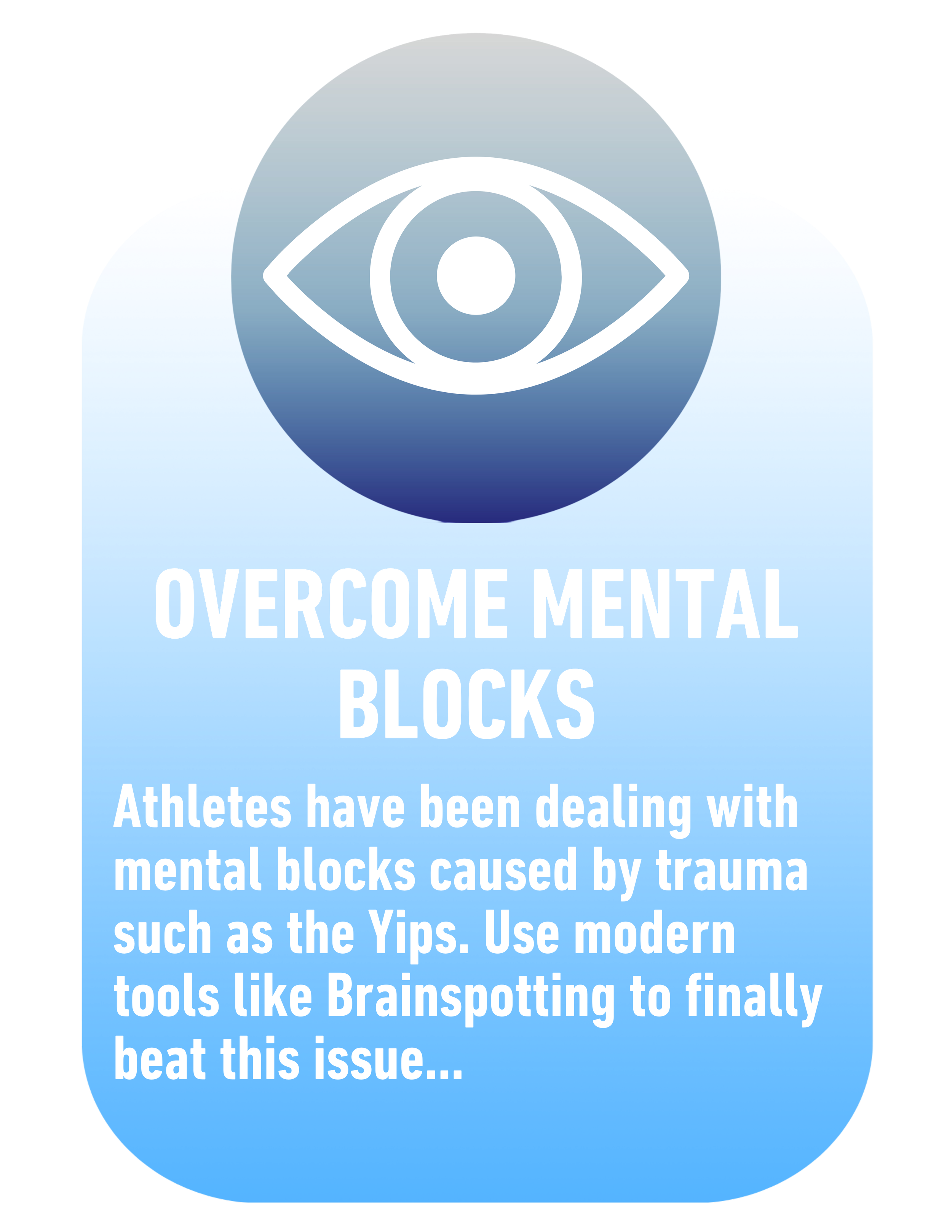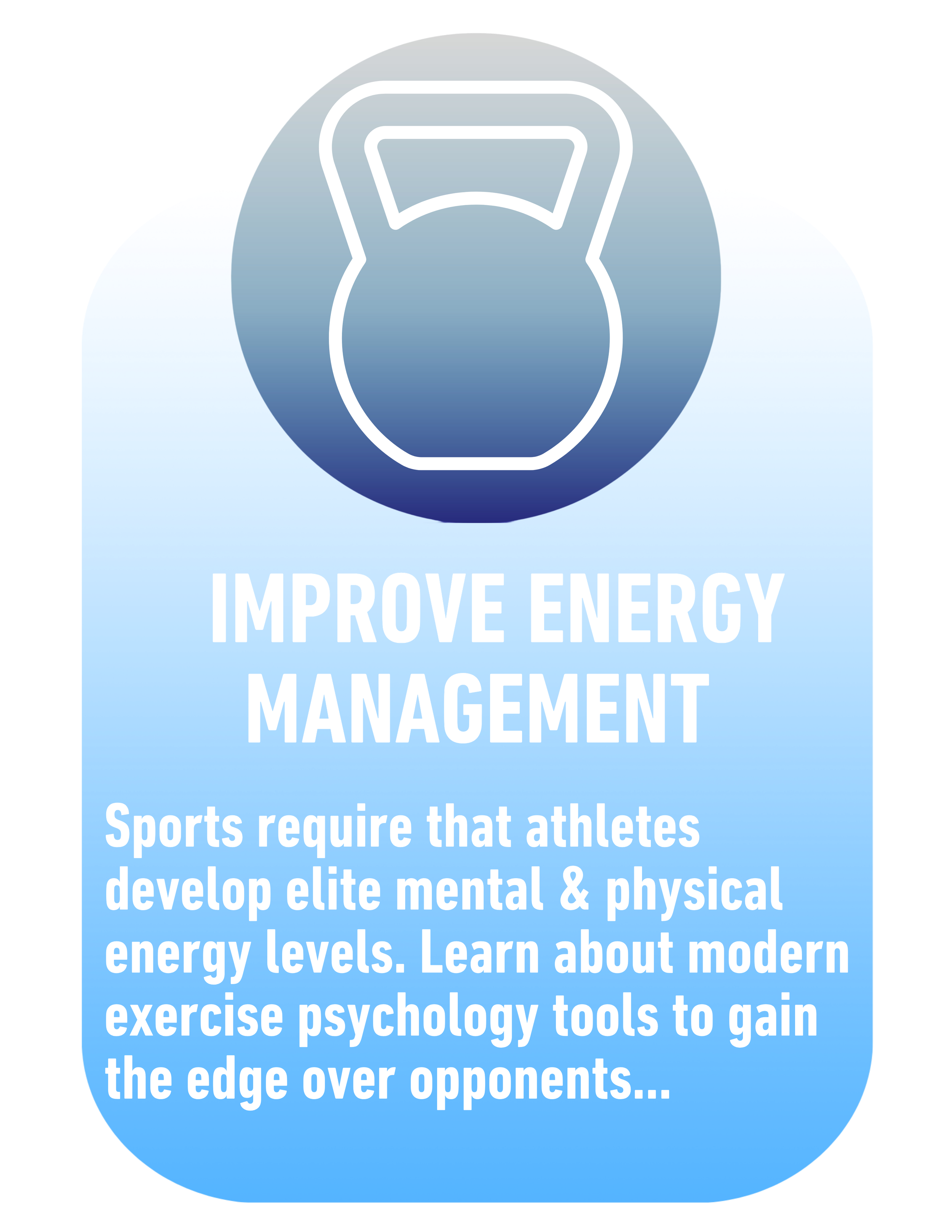Sport Psychology Case Studies - Baseball Player Yips
About the Author
Ben Foodman is a licensed psychotherapist & performance specialist. He owns his private practice located in Charlotte North Carolina where he specializes in working with athletes to help them overcome mental blocks (the yips), PTSD, ADD / ADHD and achieve flow states through the techniques of Brainspotting & Neurofeedback. If you are interested in services, use the link here! Enjoy the article below!
Disclaimer: The personal information of this athlete has been changed to protect their identity and the content from this study has been approved by the athlete for disclosure. The situations described in this case study are common experiences this athlete population experiences and is meant to provide insight into what Ben’s approach looks like.
Introduction: Baseball Pitchers & The Yips
In my private practice I see many different types of athletes. Some common athlete populations I work with are cross country/track & field athletes, endurance athletes, NASCAR drivers, WRC / Rallycross drivers, IMSA / WEC drivers, IndyCar drivers and other motorsport athletes. But the most common athletes that I see are baseball pitchers. I have worked with baseball pitchers that compete at every level which includes high school, junior college, SEC & ACC pitchers, minor league and MLB pitchers. Part of the reason for this is because baseball is what people refer to as a “sport of failure” and takes a significant mental toll on these athletes.
One common negative side effect that the mental toll takes on baseball players is commonly known as the Yips. Many coaches and self-proclaimed experts claim to have “cures” that utilize techniques such as changing throwing mechanics and implementing positive self-talk. Unfortunately, most coaches, baseball players, and even traditional sport psychologists do not have an accurate understanding of what the Yips actually is, which is why many of these interventions fail. For this issue of the Training Report I want to provide a case study about my work with an SEC college baseball player that was dealing with the Yips, and how I helped him overcome this issue.
Part I. SEC Baseball Pitcher Dealing With The Yips
Bryan reached out to me in 2019 because he was dealing with what his coaches and teammates referred to as “the Yips”. Bryan was a starting pitcher in the SEC and was entering into his junior season. His father had played several years in MLB and was passionate about the sport. As a result, he entered Bryan into baseball at a very early age. When Bryan started off in little league, he had a very supportive coach. Bryan’s coach and his dad would collaborate on the best ways to help train him, but as Bryan got further along into his playing career, he wanted to have more control over his training. This initially created friction between him and his dad but eventually Bryan was selective about who he would or would not train with. Eventually though, Bryan’s problems began to take a turn for the worse when he started high school baseball and his travel team.
Bryan not only sustained multiple injuries during his sophomore season which included getting hit in the face with a ball and tearing his ACL during a pickup basketball game with his friends. Despite these injuries and extensive recovery periods, Bryan still was able to return to the mound and maintain his status as the top pitcher in the state. But despite Bryan’s success, he was secretly dealing with the Yips. Before every game he would experience intense tension throughout his body and would start off some of his games struggling to locate the ball. There were moments when he would overthrow the catcher and was always rattled by the location or state of opposing team’s bull pens. Regardless of if this happened or not, Bryan was also dealing with the pressure of recruiting, having negative experiences with his coaches (e.g. coaches would scream at him and would blame him for bad game outcomes in front of the whole team). Ultimately though, Bryan chose to play in the SEC and was the prized recruit of the class.
Part II. Using Evidence-Informed Sport Psychology For Baseball Yips
While Bryan was at his university, he wanted to see if he could overcome the Yips. He first tried working with the university’s sport psychologist to see if they could help with this issue. During their first meeting, the sport psychologist talked to Bryan about using “positive self-talk” and using a journal to write down positive affirmations, and to read those affirmations before practice and games. Bryan used this approach for several weeks but was not seeing any improvement in his symptoms. Eventually, he stopped attending the meetings and tried to seek help from someone outside of the university. He searched on Google for any professionals or articles he could find on baseball yips. Several services were by former athletes advocating that baseball players with the yips change their throwing mechanics. After searching through different options, he found one business where the professional claimed to have baseball drills that he could use to overcome this issue. After spending hundreds of dollars for online coaching with no results, he told the mental coach that he was having trouble achieving the outcomes that they promised. The coach responded by saying “overcoming the yips is about having commitment, you just need to keep working on being mentally committed”. Bryan was understandably frustrated at this point and was starting to think that he was unconsciously ‘resisting’ and causing problems for others around him. Bryan was on the verge of quitting baseball and almost scheduled several meetings with his coaches where he intended to quit.
Finally, one of Bryan’s family members forwarded my information to him and he began to read more about my explanation for the Yips and what causes it. The following excerpt is what prompted Bryan to reach out to me: In my experience working with baseball pitchers, there are common symptoms that they will describe when they are ‘yipping’ during pitching. Some of these symptoms include but are not limited to involuntary spasms of the hand, excessive muscle tension in very specific areas of the body, a very intense temperature change felt in certain areas of the body, temperature changes that come in ‘waves’ such as increase of heat in the head or even the elbows, hyper focusing on a very small area of the catcher, a quick and unexpected muscle spasm in random parts of the body during pitches, being excessively worried about the location and status of the bullpen, etc. Unfortunately, most sport psychologists and even neuroscientists are so confused in their understanding of what this problem actually is. Most of these professionals spend their time focusing on the symptoms I previously mentioned by providing ‘coping’ strategies that just help athletes ‘manage’ these symptoms. The truth is that these professionals should not be focusing on the symptoms but rather using the information of the symptoms to try and understand what the true, underlying issue that is is creating these symptoms. The best way to understand that is by exploring the neuroscience of trauma, and expanding our knowledge of how trauma creates these issues.
Trauma is ultimately the culprit behind the yips. More specifically, it is trauma that has not yet been processed which causes these issues. Like all humans, athletes go through a variety of experiences both inside and outside of baseball that can have a severely negative impact on their psychological well-being. Consider all of the potential stressors that one can experience training and competing as a pitcher in baseball: sports humiliations, training and performance-related injuries, not achieving performance metrics that satisfy coaches, not achieving performance metrics that satisfy family members, verbal abuse from coaches, high levels of athlete identity, etc. Then we have to also consider the ‘out of baseball’ experiences that pitchers can have which include the following: car accidents, interpersonal relationship issues, health concerns that require surgery, loss of a family member or loved one, etc. It’s not to say that everyone who experiences one or several of the previously mentioned examples will be traumatized, but rather it’s that we don’t know who will be affected by these issues and to what extent they will be impacted. What we know for sure is that all of the previously mentioned examples are possible catalysts for the storage of unprocessed trauma, and unprocessed trauma can lead to baseball pitching Yips. Upon reading more of my blog posts, Bryan immediately scheduled an assessment with me through my contact form on my website. Once I received Bryan’s contact form, I texted with him and scheduled an in-person office appointment for the initial assessment.
Part III. How Baseball Pitchers Experience Polyvagal Theory, EMDR & Brainspotting
When Bryan came in for the initial assessment, he met me at one of my offices located in Ballantyne, North Carolina (my second office is in Huntersville, North Carolina). During the assessment, Bryan revealed to me how the pressures of baseball have negatively impacted his stress levels, and he was beginning to feel as though he could not cope with the side-effects of pressure from being an SEC pitcher. During the rest of the assessment, I explored Bryan’s developmental history (e.g. if Bryan was born c-section or vaginal birth, did Bryan hit his developmental markers on time such as crawling, walking, etc.), training protocols, injury history, recovery habits, sleeping patterns, concussion history, chronic pain, and any additional underlying health concerns. At the end of the assessment, I told Bryan that my professional opinion was that we should focus on Brainspotting for at least 6 sessions before we would see progress. Bryan and I defined progress as seeing a significant reduction in the Yips symptoms. The only ‘homework’ Bryan had to do outside of our sessions was to work on our biofeedback protocols and monitoring his energy/recovery patterns.
Bryan would come to my office one time per week, six weeks in a row following our initial assessment. Each of our sessions lasted approximately one hour and thirty minutes. For the first fifteen minutes of the session, he would update me on his training, and then for the remainder of the session, we would go into Brainspotting. I would ask Bryan to first describe to me the sensations that he was experiencing during the Yips, and what image/memory he could see that was most closely associated with this sensation in his body. I would then have Bryan stare at a pointer and have him follow the movement of the pointer with his eyes until he started to feel similar sensations during his throwing Yips. During this process, Bryan was also holding a bilateral stimulation tool that helped provide Bryan with a grounding sensation to make it through the most intense portions of the Brainspotting session. While Bryan reported experiencing extreme sensations of anxiety during the first two sessions, Bryan noticed that these sensations significantly diminished and by the sixth session Bryan reported that it felt as though his throwing Yips had nearly vanished!
Part IV. The “Before & After” Effects Of Brainspotting Sport Psychology & The Yips
Before Bryan came to see me, he was dealing with a severe episode of the yips when he would pitch. Examples of this would include him experiencing intense tension throughout his body and he would start off some of his games struggling to locate the ball. There were moments when he would overthrow the catcher and was always rattled by the location or state of opposing team’s bull pens. After coming to work with me using Brainspotting to overcome the Yips, he was able to gradually reduce the symptoms of the Yips to the point where they were eventually completely gone. He still felt tension, but it was more nerves of excitement. He was able to locate the ball, throw with control, and never overthrew the catcher. He also was no longer impacted by the state of opposing team’s bull pens. Bryan and I agreed to space his sessions out and continue to work on developing other parts of his pre-performance routines and mental training habits.
My work with Bryan is a strong representation of how my work with baseball pitchers typically goes. It is important to note that while Brainspotting CAN work for all athletes, that does not mean it will work for all athletes. I would estimate that when I use Brainspotting with pitchers who are dealing with the Yips, my success rate is approximately 30%…this means that I have a 30% chance of successfully helping baseball pitchers get rid of the Yips when I use Brainspotting. In cases where Brainspotting is not the effective intervention, I work on helping pitchers utilize other tools that can be effective. For instance, many pitchers I have worked with do not have pre-performance routines that are based on psycho-somatic approaches. When this occurs, we may use alternative approaches such as biofeedback or exercise psychology. If you would like to learn more, scroll down below and use the contact form for more information!
HOW DOES BEN HELP ATHLETES?
WHAT ARE COMMON ISSUES ATHLETES WORK ON WITH BEN?
HOW DO I START WORKING WITH BEN?
Use the contact form below to reach out to Ben to learn more about his services to see if he is the right fit for your goals!
Note To Reader:
If you are an athlete reading this segment of the TRAINING REPORT, hopefully this content was helpful! I put the Training Report together because I felt like many of the discussions on issues such as the Yips/mental blocks, strength training & other subject matter on athlete performance concepts were really missing the mark on these ideas (e.g. how trauma is the direct cause of the Yips). If you are interested in learning more, make sure to subscribe below for when I put out new content on issues related to sport psychology & athlete performance! Also, if you are looking to work with a mental performance specialist, you are in the right place! USE THIS LINK to reach out to me to see if my services are the right fit for your goals!
ARE YOU ON THE LIST?
Make sure you’re signed up to Ben’s mailing list to receive news & updates on new strategies in sport psychology, upcoming workshops & products. Don’t wait, sign up now!



























































































